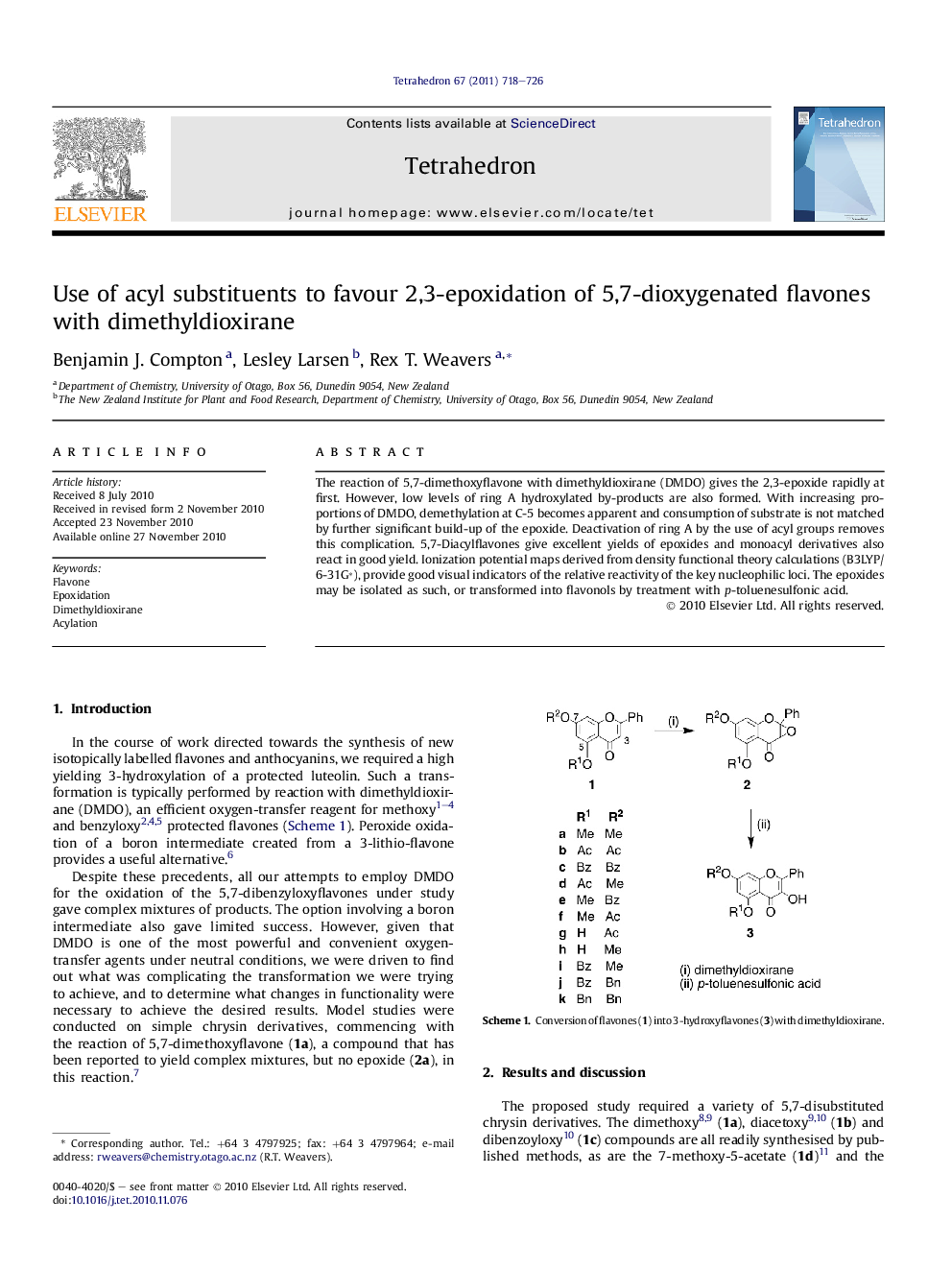| کد مقاله | کد نشریه | سال انتشار | مقاله انگلیسی | نسخه تمام متن |
|---|---|---|---|---|
| 5222026 | 1383440 | 2011 | 9 صفحه PDF | دانلود رایگان |

The reaction of 5,7-dimethoxyflavone with dimethyldioxirane (DMDO) gives the 2,3-epoxide rapidly at first. However, low levels of ring A hydroxylated by-products are also formed. With increasing proportions of DMDO, demethylation at C-5 becomes apparent and consumption of substrate is not matched by further significant build-up of the epoxide. Deactivation of ring A by the use of acyl groups removes this complication. 5,7-Diacylflavones give excellent yields of epoxides and monoacyl derivatives also react in good yield. Ionization potential maps derived from density functional theory calculations (B3LYP/6-31G∗), provide good visual indicators of the relative reactivity of the key nucleophilic loci. The epoxides may be isolated as such, or transformed into flavonols by treatment with p-toluenesulfonic acid.
Figure optionsDownload as PowerPoint slide
Journal: Tetrahedron - Volume 67, Issue 4, 28 January 2011, Pages 718–726